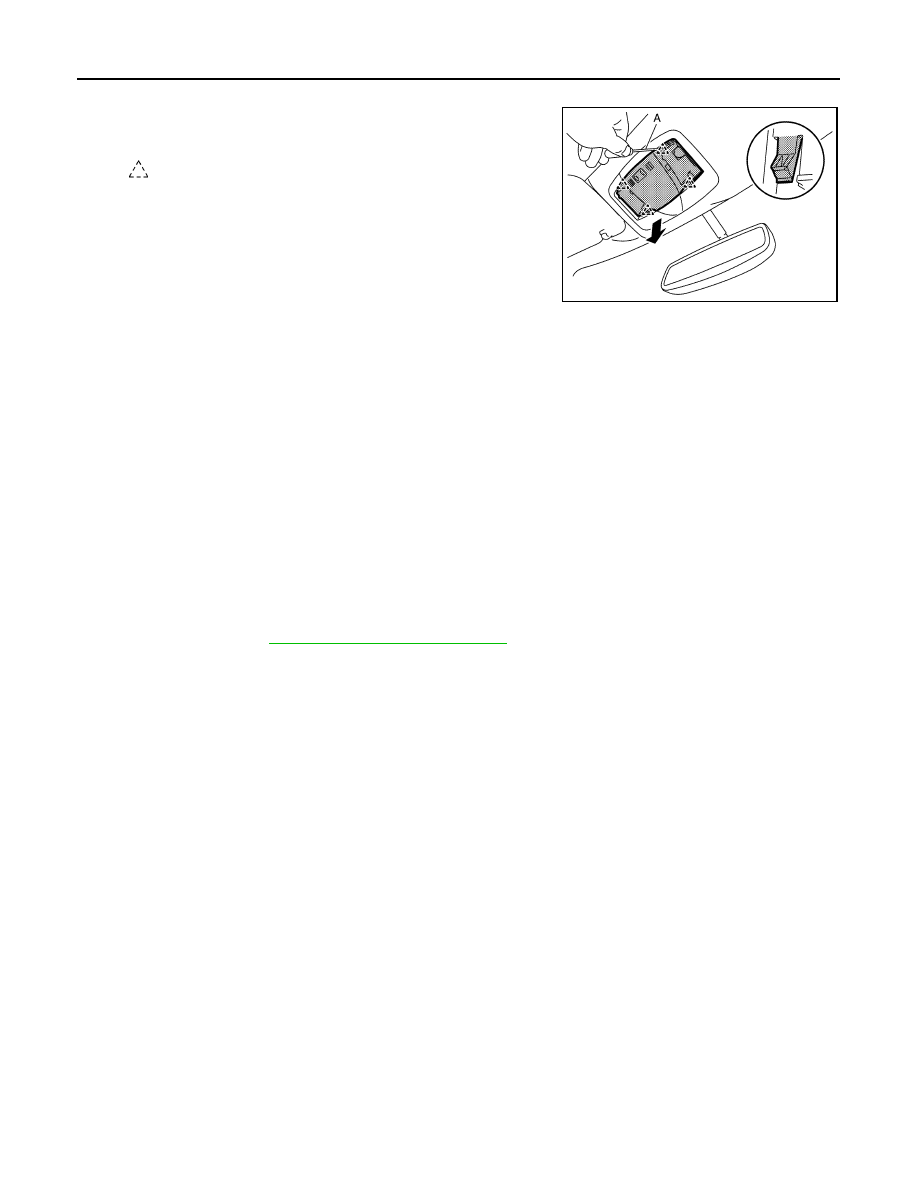Murano Cross Cabriolet Z51 (2013 year). Manual - part 53

INL-36
< REMOVAL AND INSTALLATION >
MAP LAMP
2.
Remove map lamp assembly.
a.
Disengage map lamp assembly fixing pawls using a remover
tool (A).
b.
Disconnect harness connector, and then remove map lamp assembly.
INSTALLATION
Install in the reverse order of removal.
Replacement
INFOID:0000000008460387
CAUTION:
• Disconnect the battery negative terminal or remove power circuit fuse while performing the opera-
tion to prevent electric leakage.
• Never touch the glass surface of the bulb with bare hands or allow oil or grease to get on it to pre-
vent damage to the bulb.
• Never touch the glass surface of the bulb with bare hands because the surface is very hot just after
the lamp is turned OFF to prevent a burns.
• Leaving the bulb removed from housing for a long period of time can deteriorate performance of the
lens and reflector (causing dirty or clouding). Always prepare a new bulb and have it on hand when
replacing the bulb.
MAP LAMP BULB
1.
Remove lens. Refer to
INL-35, "Removal and Installation"
.
2.
Remove bulb.
: Pawl
JMLIA2228ZZ
Revision: 2012 October
2013 Murano CrossCabriolet